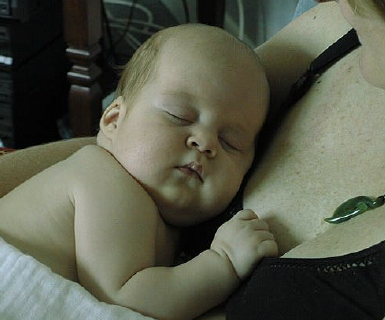Introduction
Many mothers continue nursing their babies after they return to work or school. If you go back to work or school, you may want to consider buying or renting a breast pump. You also can express breast milk by hand. Be sure to practice with the pump a few weeks before your first day back at work or school.
Expressing Suggestions
- Hand-express milk without using a pump. Hand expression costs nothing and needs no special equipment.
- Rent or buy an electric pump. This is the most efficient type of pump. You can pump each breast separately or both breasts at the same time. If you do both breasts at the same time, expressing takes about 10 - 15 minutes. You can share a pump with other mothers, but you must have your own pumping kit.
- Buy a mini-electric, battery-operated or manual pump. These are less expensive and more portable, but are not as efficient. Most will pump only one breast at a time, taking about 30 minutes to pump both sides.
- No matter which method you choose, remember to wash your hands and equipment before you begin.
- Look at pictures of your baby to make it easier for you to express milk.
- Express milk more often if your breasts leak. You can use nursing pads inside your bra and press gently against your nipples to stop the leak. Keep a sweater or a jacket at work in case you need to cover leak marks.
- Thank your employer or teacher for supporting your decision to breastfeed your baby.
- Also, let your childcare provider know how much you appreciate her support.
For specific questions about expressing milk and using pumps, talk to your health care provider or breastfeeding experts, such as a lactation consultant, nurse, nutritionist, or a La Leche League leader.
Guidelines for Storing and Transporting Breast milk
| Condition |
Suggestion |
| Room Temperature at 77°F or below |
*Use Within 3- 4 hours |
| In refrigerator at 40°F or below |
Use within 2 Days |
| Frozen in a separate freezer compartment at 0°F or below |
Store Up to 3 Months |
| Frozen in a deep freezer at - 4°F |
Store Up to 6 Months |
| Thawed from frozen and refrigerated at 40°F or below |
Use within 24 hours |
| *Beware that summer temperatures in the desert reach 110°F. It is difficult to maintain a consistently cool room temperature. |
The above guidelines are consistent with the recommendations of the American Academy of Pediatrics.
Store breast milk in sterilized bottles in a refrigerator or insulated cooler with ice packs. Store in small amounts (about 2 to 4 ounces) for a young baby. Make sure the lid is solid, not a nipple with a hole.
Label each container with the name of your child, and the date and time milk was pumped. Then your childcare provider can easily identify your baby's milk and it's freshness.
Carry milk in an insulated thermos bottle or in an insulated container with a freezer gel pack to keep it cold.

Thawing and Reheating
The preferred method to thaw frozen milk is to thaw it in the refrigerator overnight. You also can place the frozen container in a bowl of warm water until it has thawed. You should NEVER use a microwave oven to thaw or warm any milk - it can destroy certain antibodies and nutrients in the breast milk. The uneven hot spots can burn your baby's mouth and throat. Never thaw breast milk on the counter at room temperature - you can easily lose track of time and bacteria can multiply rapidly without your knowing it.
Feeding
Breastfeed when you pick up your baby or as soon as you get home. Relaxing together for the first 30 minutes can refresh you and give you some quiet time with your baby. To keep up your milk supply, breastfeed whenever you are with the baby - mornings, evenings, and days off. You don’t need to use bottles or infant formula when you’re with your baby. As your baby gets older, give him/her some pumped milk in a cup. Your baby will get used to drinking your milk from a cup.
References
Mom's Special Gift is funded by the Food Stamp Program. Food Stamps can help make ends meet and serve as the first line in defense against hunger. It enables low income families to buy eligible nutritious food in authorized food stores. For information about the Food Stamp Program in Nevada, call: 1-800-992-0900, ext. 0500.

Sigman-Grant, M. and Tang M.
2003,
Safe Handling of Expressed Breast Milk,
Extension | University of Nevada, Reno, FS-03-19


